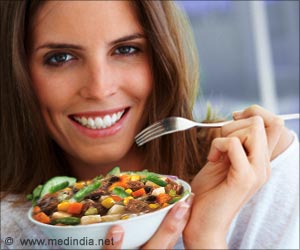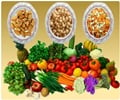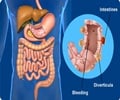Fiber is essential for health, offering benefits that often surpass those of protein, yet many people fail to consume enough of it.
- Fiber supports digestive health and helps prevent constipation
- A high-fiber diet is linked to lower risks of chronic diseases
- Plant-based foods are excellent sources of both fiber and protein
Fiber and Protein: Why a High Protein High Fiber Diet Will Change Your Life
Go to source).
Most people do not meet their daily fiber requirements, which can lead to various health issues. #medindia #fiberfirst’
Understanding Fiber and Its Benefits
Fiber is a category of carbohydrates that can not be broken down in the body. Fiber is unique from other carbohydrates in that it is slowly processed and altered during digestion, while at the same time imparting many other health aspects. Here are some key advantages of incorporating more fiber into your diet:- Improved Digestive Health: Fiber aids in controlling bowel movements and causes one not to have constipation, it increases feces content. It also helps maintain proper gut flora, thus playing an important role in sustaining a healthy digestive system.
- Heart Health: Foods containing fiber are linked to low cholesterol levels thus improving one's chances of not getting affected by heart diseases. All these soluble fibers are advantageous in reducing LDL cholesterol also known as bad cholesterol.
- Weight Management: High-fiber foods are usually larger compartments that take longer to eat in shorter quantities and as a result reduce appetite and overall calorie consumption. As for those people who would like to either lose or at least maintain their weight, it can be very helpful indeed.
- Blood Sugar Control: Fiber takes time before it is absorbed by the body systems and this means that it relieves the rate at which sugar enters the bloodstream. This is particularly beneficial for diabetic patients or those with the genes that predispose them to the disease.
The Fiber Deficiency
Nevertheless, fiber is very useful, but people take it in insufficient amounts. Current dietary recommendations suggest that a large number of people do not consume recommended intakes of fiber daily. This deficiency underscores the need to have a dietary shift in favor of high-fiber foods.
Why Fiber is More Important Than Protein
Protein is needed for tissue construction and repair, however most individuals get more than enough of this nutrient. One may easily overconsume protein, and often people consume even more protein than they require. At the same time, the consumption of fibers is low, which causes different diseases In contrast. Here are some reasons why fiber should take precedence:- Gut Health: Fiber is particularly important in the well functioning of the digestive system. It helps to ease dryness, and a build-up of toxins within the colon as well as help foster the growth of good bacteria in the gut – a factor that could lead to improved well-being.
- Chronic Disease Prevention: Consumption of fiber-rich foods is associated with a decreased risk of various diseases such as heart disease, type 2 diabetes, and some cancers. However, a high proportion of protein especially animal protein can lead to diseases including kidney problems and elevated cancer rates.
- Satiation and Weight Control: Foods containing fiber are less likely to make one overeat than foods containing proteins, since the former makes one feel fuller. It is especially helpful in that case for weight loss.
Practical Tips for Increasing Fiber Intake in Food
1. Embrace Plant-Based FoodsIncorporating more plant-based foods into your diet is one of the best ways to increase fiber intake. Focus on:
- Legumes: Beans, lentils, and chickpeas are excellent sources of both protein and fiber.
- Whole Grains: Opt for whole grain bread, brown rice, quinoa, and oats instead of refined grains.
- Fruits and Vegetables: Aim to fill half your plate with fruits and vegetables, which are naturally high in fiber.
To ensure you are getting a variety of fibers, include different sources in your meals. For example:
Breakfast: Start your day with oatmeal topped with fruits and nuts.
Lunch: Enjoy a salad with a mix of leafy greens, beans, and seeds.
Dinner: Incorporate whole grains like quinoa or brown rice with your meals
.
High Fiber Options to Snack Wisely
Choose snacks that are high in fiber, such as:- Nuts and Seeds: Almonds, chia seeds, and flaxseeds are great options.
- Fruits: Fresh fruits like apples, pears, and berries are not only delicious but also packed with fiber.
- Vegetable Sticks: Carrot and celery sticks with hummus make for a nutritious snack.
Reference:
- Fiber and Protein: Why a High Protein High Fiber Diet Will Change Your Life - (https://mychn.org/fiber-and-protein/)
Source-Medindia
















